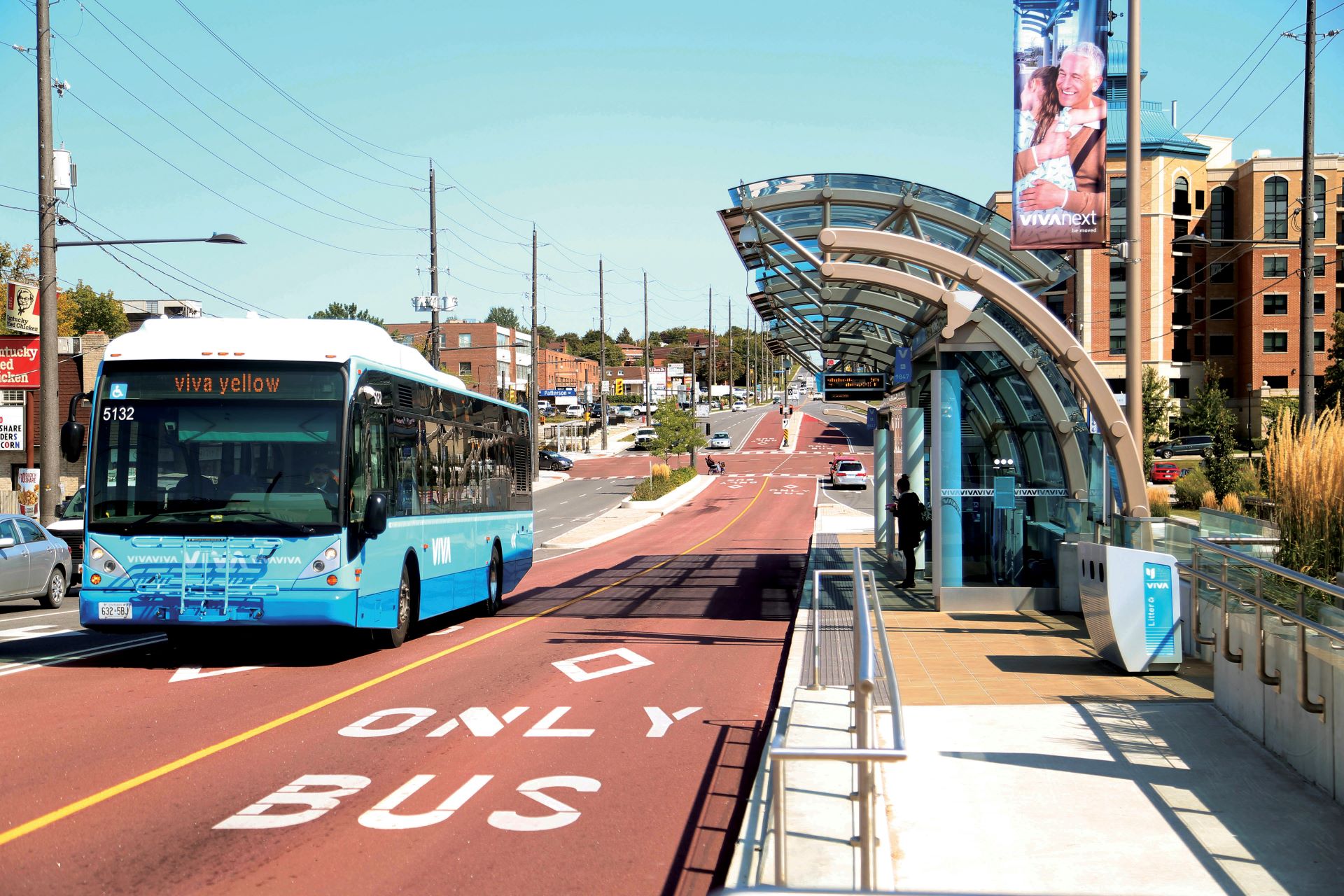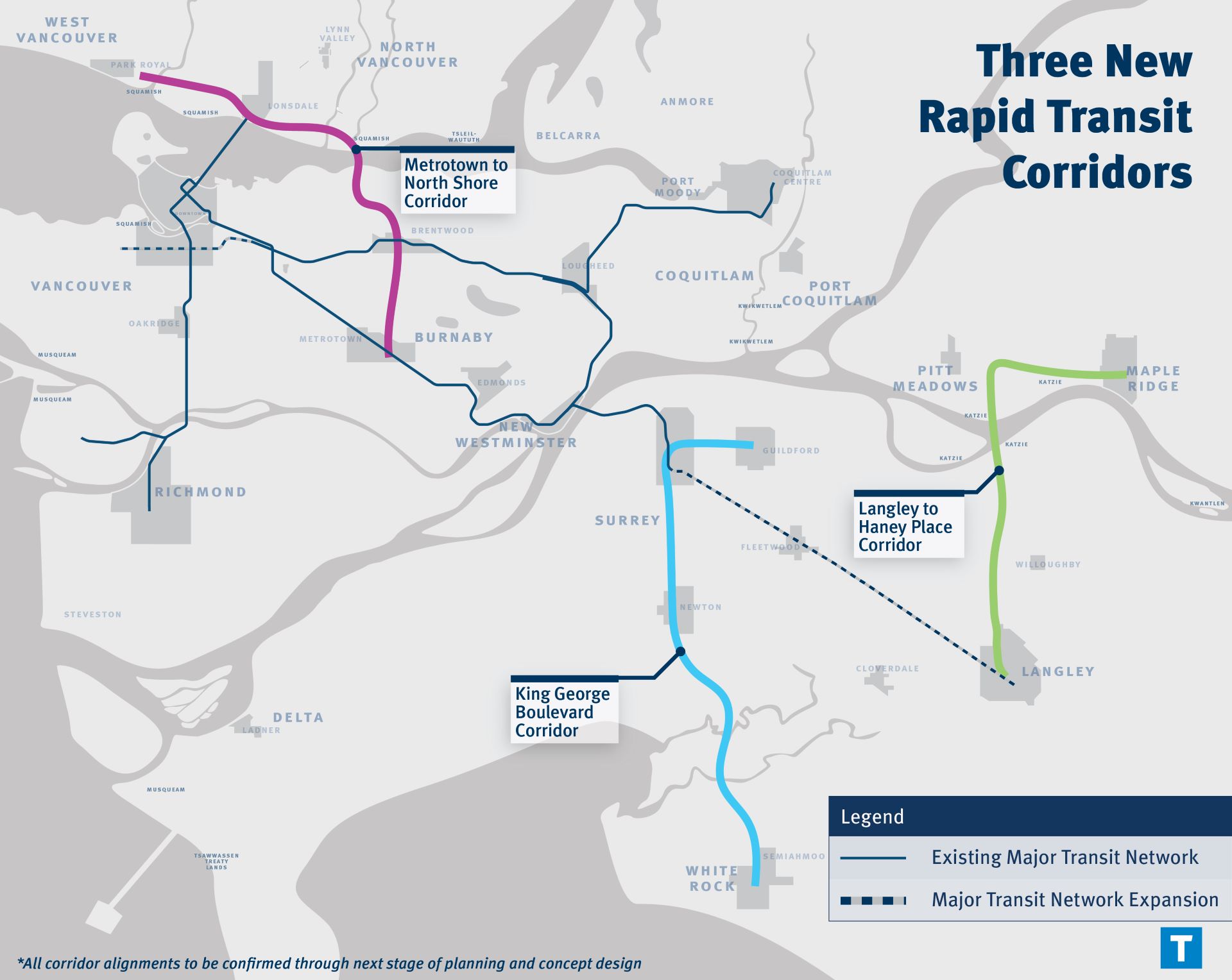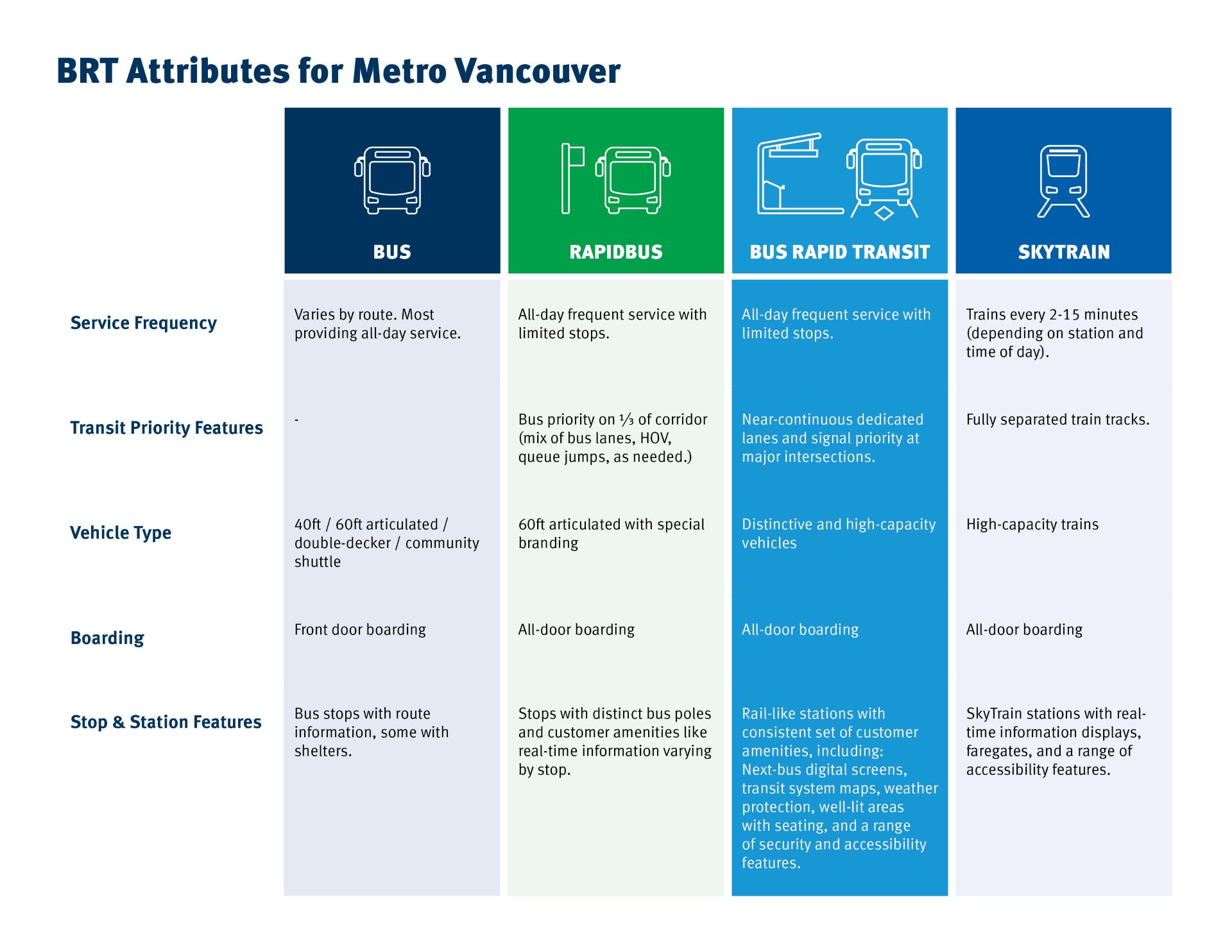Three new rapid transit corridors coming to Metro Vancouver
Three new rapid transit corridors coming to Metro Vancouver
TransLink to advance the region’s first new Bus Rapid Transit routes

The Mayors’ Council on Regional Transportation has selected three priority corridors for TransLink to advance Metro Vancouver’s first new Bus Rapid Transit (BRT) routes. BRT is a high-frequency rapid transit service with dedicated bus lanes and rail-like stations.
The corridors are:
- King George Boulevard from Surrey Centre to White Rock
- Langley Centre to Haney Place
- Metrotown to North Shore
The three corridors were selected based on ridership potential, increasing access to jobs, future housing and development growth projections, the feasibility of implementing new transit priority infrastructure, and the early support from local governments to implement the changes necessary for the projects.
What is Bus Rapid Transit?
BRT routes will keep customers moving quickly by operating with high frequencies in traffic-separated lanes and signal priority at intersections. They will have high-capacity buses with rail-like stations that provide customers with real-time information, shelter, and convenient boarding.
| Frequent Service
A high-frequency service that will run with high-capacity fleet. |
Fast and Reliable Service
Dedicated lanes and traffic signal priority will provide fast and reliable service. |
Rail-like Stations
Rail-like stations that are designed to support fast and convenient boarding, and include weather protection, next-bus digital screens, and a range of security and accessibility features. |
Next steps
TransLink will advance BRT planning work on the King George Boulevard and Langley Centre to Haney Place corridors. For the Metrotown to Park Royal corridor, TransLink will immediately extend and upgrade the R2 RapidBus while advancing rapid transit planning through the Burrard Inlet Rapid Transit Study. This work will determine the ultimate rapid transit technology for this corridor.
The specific alignment, designs, associated costs, and timelines have not yet been determined for each of the three corridors. TransLink and local government partners will immediately begin work to develop concept designs and engage with the public on these three corridors.
Through the Access for Everyone plan, TransLink is working with regional mayors to implement up to nine regional BRT corridors. These three corridors have been selected in the first phase to proceed, with the other corridors to follow.
Visit translink.ca/brt to learn more about the BRT Program.
Terence Chu








This is wonderful!
The key is to make the buses feel like trains as much as possible. Taking a BRT shouldn’t feel like taking a regular bus. It should feel more stable, like on rails.
– More smooth acceleration
– No sudden turns
– Higher door spacing for easy boarding and disembarkment, possibly even on both sides
In addition, the key is for signal priority to provide as few traffic light stops as possible. If possible, the time between each stop should just be accelerate and decelerate, with no stopping at traffic lights. If running in the center median, the bus should never need to wait for cars making left turn.
The terminology is on the precipice of confusion, as alluded by the headings in the included table. Will “Bus Rapid Transit” be used in marketing and public branding for this new mode, or is it more just a planning descriptor (like “light rail transit”)?
The problem is that “Rapid Bus” and “Bus Rapid Transit” are shown as distinct services, yet have virtually identical names.